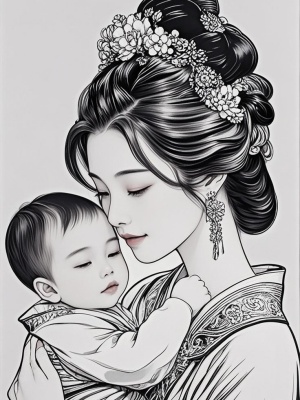The Art of Watercolor Coloring: A Comprehensive Guide
Introduction to Watercolor Coloring
Watercolor coloring is a versatile and expressive medium that has captivated artists for centuries. Unlike other painting techniques, watercolor offers a unique transparency and fluidity that creates ethereal and luminous effects. Whether you're a beginner or an experienced artist, mastering watercolor coloring can open up a world of creative possibilities. This guide will explore the fundamentals, techniques, and advanced tips to help you elevate your watercolor skills.
Essential Materials for Watercolor Coloring
Choosing the Right Supplies
To get started with watercolor coloring, you'll need a few basic materials. High-quality supplies can make a significant difference in your artwork. Here’s a list of essentials:
- Watercolor Paints: Opt for artist-grade paints for better pigmentation and longevity.
- Brushes: Synthetic or natural hair brushes in various sizes for different strokes.
- Paper: Use heavyweight, acid-free watercolor paper to prevent warping.
- Palette: A mixing palette for blending colors.
- Water Containers: Keep two jars of water—one for rinsing and one for clean water.
Problem-Solution Matrix
Here’s a quick reference for common issues and their solutions:
- Problem: Colors appear muddy. Solution: Avoid overmixing; let colors blend naturally on paper.
- Problem: Paper warps. Solution: Stretch paper beforehand or use a heavier weight.
- Problem: Brush strokes are uneven. Solution: Use the right brush size and maintain a consistent water-to-paint ratio.
Techniques to Master in Watercolor Coloring
Wet-on-Wet Technique
The wet-on-wet technique involves applying wet paint onto a wet surface, allowing colors to blend seamlessly. This method is perfect for creating soft backgrounds or gradients. For example, it’s ideal for painting skies or water reflections. To achieve the best results, ensure your paper is evenly damp but not soaking wet.
Dry Brush Technique
Contrary to wet-on-wet, the dry brush technique uses minimal water, resulting in textured, rough strokes. This is excellent for adding details like tree bark or hair. Load your brush with paint and remove excess water on a paper towel before applying.
Layering and Glazing
Layering involves applying multiple transparent layers of paint to build depth and richness. Glazing, a subset of layering, uses thin, transparent washes over dry layers to modify colors subtly. Both techniques require patience, as each layer must dry completely before adding the next.

Advanced Tips for Watercolor Coloring
Color Theory and Mixing
Understanding color theory is crucial for watercolor coloring. The color wheel can help you create harmonious palettes. For instance, complementary colors (opposite on the wheel) can make each other pop, while analogous colors (next to each other) create harmony. Experiment with mixing primary colors to expand your palette without buying additional tubes.

Preserving Whites and Highlights
Unlike opaque mediums, watercolor relies on the white of the paper for highlights. Planning where to leave white spaces is essential. You can use masking fluid to preserve areas or lift paint with a clean, damp brush for softer highlights.
Inspiration and Applications
Watercolor coloring isn’t limited to traditional landscapes or portraits. Many artists use it for modern illustrations, AI-assisted art, or even wedding invitations. The medium’s adaptability makes it perfect for both fine art and commercial projects. For more inspiration, explore our gallery of watercolor masterpieces.
Conclusion
Watercolor coloring is a rewarding medium that combines technique, creativity, and patience. By mastering the basics and experimenting with advanced methods, you can create stunning artworks that capture the essence of this timeless medium. Whether you're painting for pleasure or professionally, the journey of learning watercolor is as beautiful as the results. For further reading, check out Handprint’s Watercolor Guide, a renowned resource among artists.